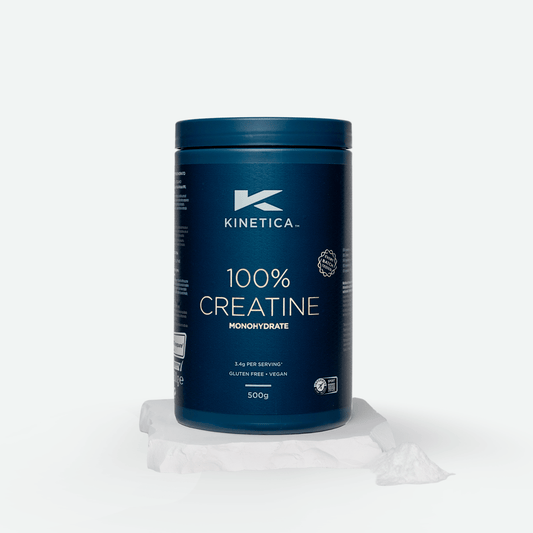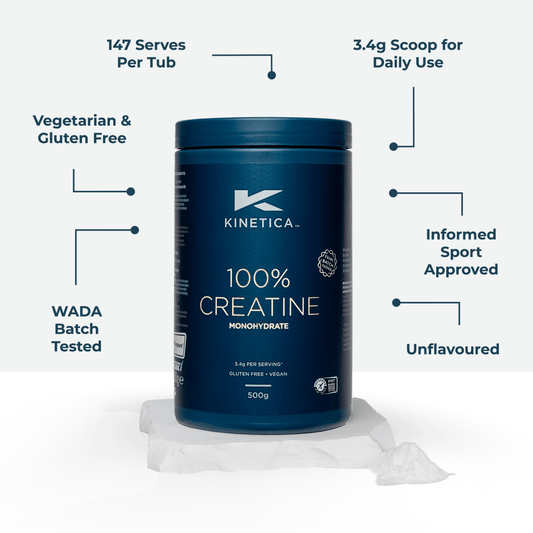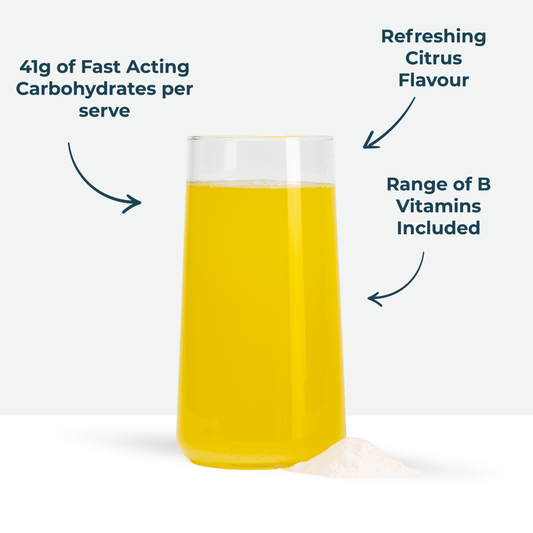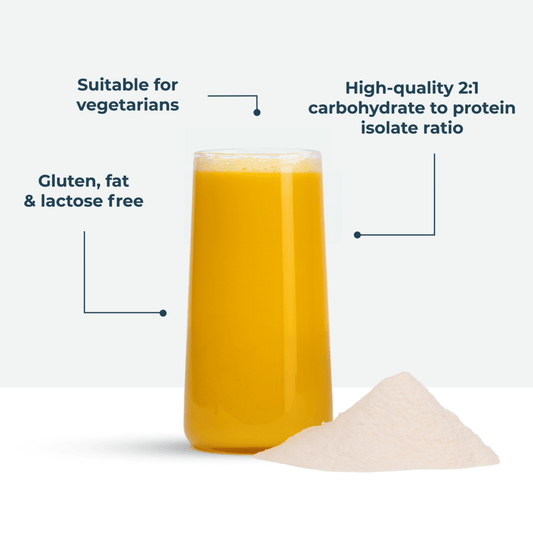Carb Loading for Runners: How to Optimise Endurance on Race Day

Endurance running has experienced a remarkable surge in popularity in recent years, with events like 5Ks, 10Ks, and marathons attracting participants of all ages and abilities. Completing a marathon of more than 26 miles is a sporting feat that many dream of, but, due to the scale of the challenge, many don’t always manage. When working with endurance runners a common theme that I see time and time again is them mismanaging their fuelling strategy. They underestimate the energy required to fuel their volume of training. If left unmanaged this can lead to a lack of progress in their training, they can become under-recovered, and under fuelled which can lead to burnout or injury. Success in endurance running requires meticulous planning, both in training and nutrition.
Sports nutrition encompasses more than just fueling with carbohydrates. Prioritising overall health is fundamental to becoming a high-performing athlete. This involves consuming 5-7 portions of fruits and vegetables daily, maintaining a high-fiber diet to support gut health and enhance the absorption of vitamins and minerals, and ensuring adequate protein intake to facilitate training recovery and repair. Nevertheless, inadequate fueling remains a primary factor contributing to both short-term and long-term performance issues, making it a consistent topic of discussion among athletes and nutrition professionals.
In this article, we will focus on carbohydrate loading in preparation for race day. Whether you're gearing up for a marathon, half marathon, or any long-distance running event, getting your nutrition strategy right from the outset of your training is key to your success.

Preparation for Race Day:
Carbohydrate loading, also known as glycogen loading, is a nutritional strategy utilised by endurance athletes to maximise their glycogen (energy) stores before a long-duration event, such as a marathon or an endurance race. It involves consuming large quantities of carbohydrates, in the days leading up to the event to increase glycogen levels in the muscles and liver beyond their normal capacity.
Glycogen is the stored form of glucose, which serves as the primary fuel source for endurance exercise (Burke, Hawley, Wong, & Jeukendrup, 2011). During prolonged or intense activity, the body relies heavily on glycogen stores to sustain energy levels. Effective carbohydrate loading can result in increased glycogen stores, improved endurance, and enhanced performance during endurance events (Havemann et al., 2006).
The process of carbohydrate loading typically begins 2-3 days before the event. The main aim of carbohydrate loading is to do the fuelling early, so the athlete can eat a bit more comfortably on the day of the race. Some athletes can lose their appetite on race day due to nerves and distractions so getting their fuelling in early is key!
For the endurance athlete, they should be aiming for 8-10g of carbs per kg of their body weight. So, for a 70kg runner, that amounts to 560-700g of carbohydrate per day. Carbohydrates should make up 70-80% of total daily calories. It's worth remembering, that they’re not eating many more calories per day than they are during the thick of your training, it’s just that, while carb loading, more of your calories are coming from carbohydrates. The focus should be on complex carbohydrates such as potatoes, pasta, rice, breads and cereals. If the athlete struggles with their appetite or tolerating large volumes of foods, low fibre foods such as pancakes, cereal bars, honey, fruit juices, dried fruit, jelly sweets, and jams are included to ease the digestive load and help them meet their targets.
In practice, not all athletes will approach their nutrition with a focus on the numbers. Some people love the details and use numbers to control their intake. Other athletes don’t want to know anything about that and would prefer to use habits or a general guideline based approach. Both can work quite well.
A general rule of thumb I use with athletes to hit their carbohydrate targets is to have a good meal structure in place. I always recommend to aim for 3 main meals and 3-4 high-carb snacks during the day. Using liquid carbohydrates can be a simple and effective way of increasing the carbohydrates within a meal for less volume.
A typical carbohydrate loading day for a 70kg athlete can look like:
- Breakfast: Large bowl of porridge with dried fruit, banana & honey with a glass of orange juice
- Mid-morning snack: Bagel with jam
- Lunch: Chicken & rice and a sports drink
- Mid-afternoon snack: Fruit smoothie made with fruit, honey, and orange juice. Cereal bar
- Dinner: Spaghetti Bolognese with garlic bread
- Pre-bed: Bowl of cereal with milk
If you step on the scales while carb loading, expect to be above your usual weight and don't be alarmed or dismayed. With every gram of stored carbohydrate, you store an extra three grams of water. That means you will be well-fuelled at the start line.
Race Day:
On the morning of the race, the athlete should aim to have a substantial breakfast that includes slow-digesting carbohydrates and a moderate source of protein. For example: Overnight oats, porridge, cereal and toast, a smoothie made with oats. Although it is important that they top-up their energy stores on the day of the race, the majority of their fueling (probably 90-95%) should be completed by their intake on the previous three days.
Light meals and fluids should be the priority to avoid fullness or sluggishness that might come with heavier meals. Avoid foods that are high in fat or fibre. If they have completely saturated their energy stores of carbohydrates in their muscles and liver by carbohydrate loading, they should have sufficient energy from glycogen to complete about three-quarters of the marathon distance.
Once they reach this stage, their glycogen stores become depleted, which is known as “hitting the wall”. So, unless they implement a fueling strategy during the race, they will struggle from this point.
During the Race
‘Hitting the wall’ can be offset by consuming fuel in the form of carbohydrates during the race. Although there are many forms of carbohydrate foods you can use, like sports gels, glucose sweets and energy snacks, the preferred form should be a sports drink.

Learn more: Energy Gels
Sports drinks are designed to provide a source of easily delivered carbohydrates as well as electrolytes that will assist with a better uptake of fluid to offset fluid losses. Consuming 30-60g of carbohydrates in the form of one to two 6% carbohydrate sports drinks per hour of your race is the recommended amount – any more than this and you may risk stomach distress.
Hydration
It is worth monitoring your hydration status the day before and the morning of the race. The simplest way to do this is by checking the colour of your urine – a light pale colour will suggest you are hydrated and dark yellow/orange colour would indicate you are dehydrated.
Although sports drinks may not have been a part of your nutrition training strategy, they certainly should be used during the marathon. Along with helping to maintain hydration, the source of carbohydrate will help to maintain energy levels. Hence, you should begin to practice using them over the coming weeks to see which drink suits you best.
The recommended fluid intake during exercise is 150-250ml every 15 minutes. This works out as 3 to 4 mouthfuls.

Learn more: Electrolyte Tablets
Myths, misconceptions, and common carb mistakes
One of the biggest mistakes athletes often make when approaching carb loading is failing to practice it in training. Ideally, an athlete will practice carb loading for their longer runs at least 3-4 times before race week. This allows the athlete to assess their reaction to the higher carbs, practice eating the actual prescribed carbohydrate amounts, and decide which foods are best tolerated.
Practising the carb load is absolutely crucial, but doing dry runs of the pre-race breakfast and the in-session race fueling is equally as important. Practicing these strategies will provide familiarity and confidence that a fueling strategy is on point when it comes to race day. Skipping this can be an athlete’s greatest undoing during a race.
In summary, success in endurance running hinges not only on your training but also on good nutrition planning. Mismanaging fuelling strategies can impact progress and lead to under-recovery or injury. By prioritising adequate carbohydrate loading and hydration, athletes can optimise their performance and increase their chances of success on race day. Additionally, practising nutrition strategies during training can help athletes fine-tune their approach and avoid common carb-loading mistakes, ultimately giving the athlete full confidence to perform on race day.




















